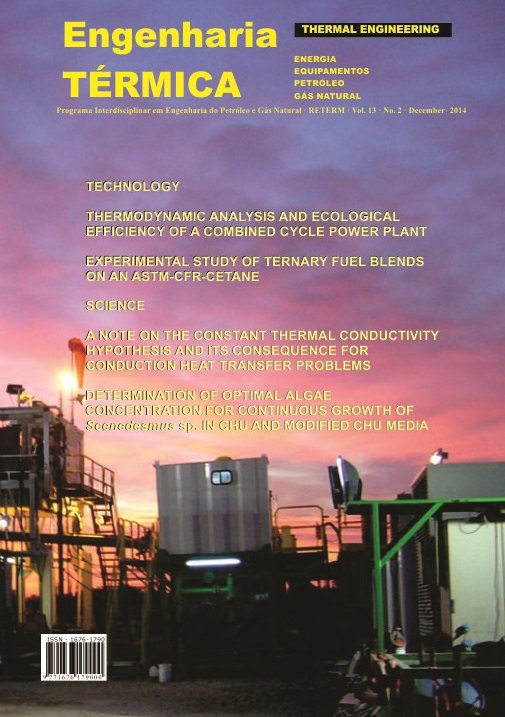EXPERIMENTAL ANALYSIS OF AN S809 AIRFOIL
DOI:
https://doi.org/10.5380/reterm.v13i2.62091Keywords:
S809 airfoil, drag coefficient, Reynolds number, angle of attackAbstract
This paper looks into the aerodynamic behavior of an S809 airfoil commonly utilized in wind turbines. Tests were carried out to measure drag coefficient profiles under high speed flows of up to 14 m/s, with Reynolds numbers ranging between approximately Re = 11,400 and Re = 135,400. The prototype was fabricated on a fused deposition modeling machine with ABS Plus thermoplastic. Several tests were carried out in a wind tunnel. Angles of attack ranging from 0° to 20° were tested in increments of two degrees in both the clockwise (leading edge above trailing edge) and counterclockwise directions (leading edge below trailing edge). Drag coefficient versus Reynolds number curves were obtained for the aforementioned angles. The airfoil drag coefficient was found to decrease as the Reynolds number increased for all the angles of attack analyzed. Airfoil dynamic stall was determined (maximum lift coefficient). In the tests, dynamic stall occurred at approximately 16° clockwise. This value is in agreement with the literature.
Downloads
Published
How to Cite
Issue
Section
License
Direitos Autorais para artigos publicados nesta revista são do autor, com direitos de primeira publicação para a revista. Em virtude da aparecerem nesta revista de acesso público, os artigos são de uso gratuito, com atribuições próprias, em aplicações educacionais e não-comerciais.



